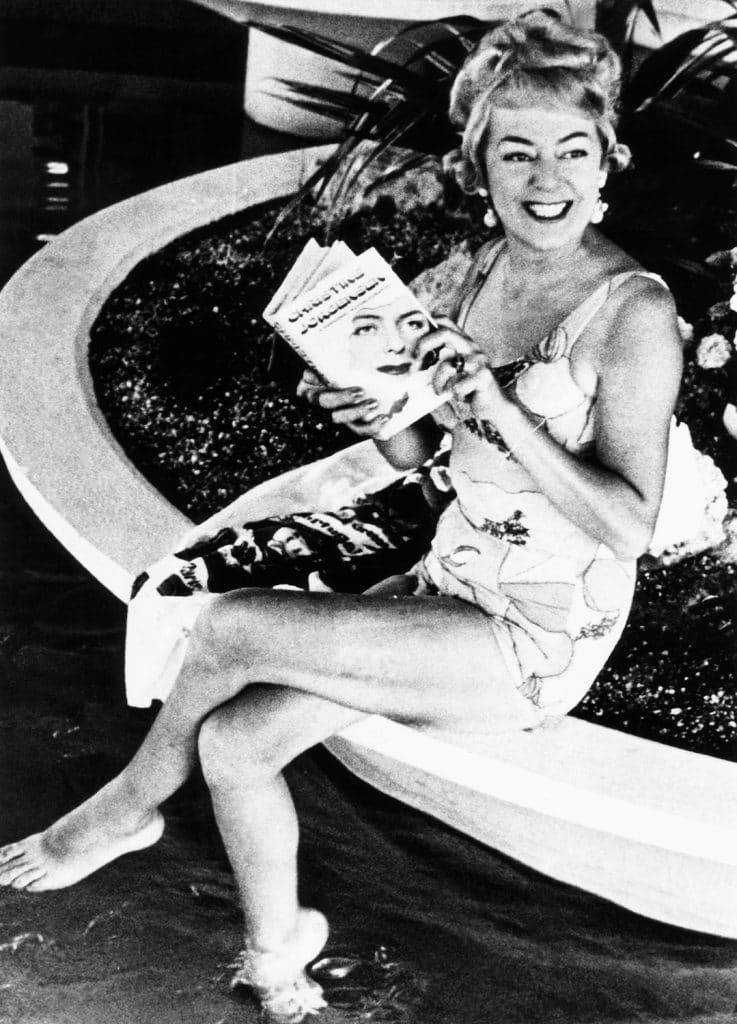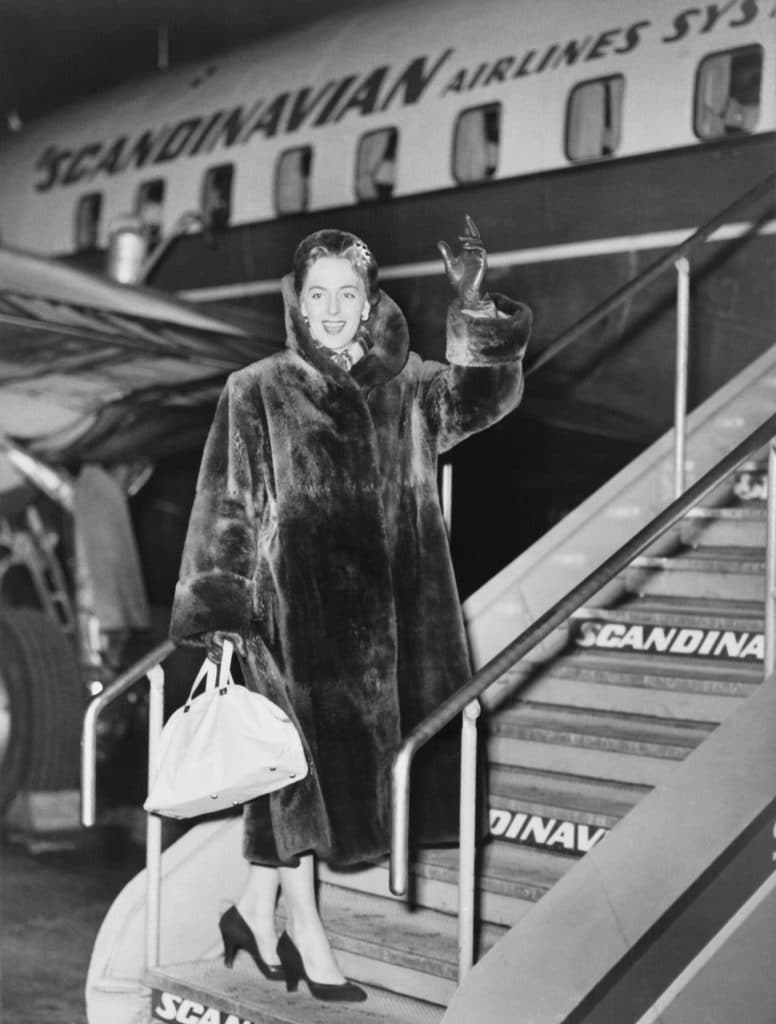Christine Jorgensen was born on May 30, 1926, in the Bronx, New York. She was assigned male at birth, but always felt like a girl. She wanted to wear girls’ clothes and play with girls’ toys. As a teenager, she developed crushes on boys and struggled to understand her own feelings.
After she graduated from high school in 1945, Christine was drafted by the U.S. Army. Christine served as a military clerical worker for a year. After World War II ended, Christine pursued a career in photography. In her free time, she read about medical procedures to help people who felt that their gender or sexual identity did not align with society’s expectations.
In 1950, she traveled to Denmark for a series of surgeries and hormone treatments that transformed her body into that of a woman. The process took nearly two years. She chose the name Christine in honor of her surgeon, Dr. Christian Hamburger.
Christine intended for her transition to remain private. However, an unidentified person who knew about the procedures she had contacted the press. On December 1, 1952, the New York Daily News published photographs of Christine before and after her transition with the headline “Ex-GI Becomes Blonde Beauty: Operations Transform Bronx Youth.” Within days, Christine Jorgensen was both a national and international celebrity. When she returned to the United States in 1953, Christine arranged with the press to make her arrival a public spectacle. Hundreds of reporters greeted her at the airport in New York City. She required a police escort to keep the crowds under control. Christine gave an interview at the airport. She thanked the press for the warm welcome, but said it was “too much.”
Although she often encountered offensive questions and rude jokes, Christine embraced the attention. She saw it as an opportunity to control the narrative about her life and advocate for acceptance of transgender people. Jorgensen was not the first transgender person in American history, but she was the most publicly recognized to date. Articles and media coverage about Christine were both positive and negative. Christine was often described as someone with a psychological illness. Many reporters questioned whether she was a “real” man or a “real” woman. Christine often emphasized that no one had to be 100% male or 100% female. It was acceptable and normal to be a little of both.
What people still don’t understand is that the important thing is identity. You don’t [transition] for sexual reasons, you do it because of who you are.
Christine fought for understanding and empathy for herself and others. She used her fame to start a career as a nightclub performer. Her act included a Wonder Woman costume and the song “I Enjoy Being a Girl.” Christine traveled the world and gave interviews on college campuses and television talk shows. She saw herself as an activist and educator, even in the face of frequent discrimination.
Christine took pride and pleasure in displaying her femininity. She often posed for photographs wearing fur coats, glamorous jewelry, and makeup. Some historians believe that her willingness to play a traditional female role made it easier for her to be accepted.
Christine’s life was not always glamorous. In 1959, she and her fiancé, Howard J. Knox, applied for a marriage license in New York City. The City denied their request because Christine’s birth certificate listed her as a male and same sex marriage was not legal at the time. She and Howard never married.
In 1967, Christine published her autobiography. She wrote that she fought hard for a successful gender transition in the 1950s because it was her best opportunity for personal freedom. Although most people emphasized her outward change, she was most grateful for the inward one. To her, the most important transformation was the one from a shy, lonely, and depressed person to a happy, confident person who felt truly herself.
Christine also used her autobiography to argue for the acceptance of transgender people and others whose identity fell outside of society’s heteronormative expectations. Reflecting on her own struggles with depression, she wrote, “The answer to the problem must not lie in sleeping pills and suicides that look like accidents, or in jail sentences, but rather in life and the freedom to live it.”
In 1987, Christine was diagnosed with bladder and lung cancer. She gave an interview toward the end of her life in which she explained that being transgender is about identity: “You don’t do it primarily for sexual reasons, you do it because of who you are.” Christine Jorgensen died on May 3, 1989 in San Clemente, California.
Vocabulary
- femininity: Qualities or traits associated with being a woman.
- heteronormative: A societal view that heterosexual people (people attracted to the opposite sex) are normal and others are not.
- hormone treatment: A medical treatment that involves the patient taking hormonal medications to more closely align the body to the person’s desired gender.
- trans woman: A person who was assigned male at birth but identifies as a woman.
- transgender: A person who does not identify with the gender they were assigned at birth. A term for all trans men and trans women.
- transition: The process of changing from one thing to another. In the transgender community, this term often refers to the specific process of changing from one gender to another.
Discussion Questions
- Christine Jorgensen was not the first trans woman in American history. Why is her story an important and memorable one?
- Why do you think Christine chose to embrace the public attention that followed the Daily News announcing her transition to the world?
- What do you think about Christine’s attempt to get married? What does this tell you about the rights of transgender people in the middle of the 20th century?
- What do you think Christine meant when she said “You don’t [transition] for sexual reasons, you do it because of who you are.”?
- Even when attempting to present Christine in a positive light, the press often described her as a person who overcame an illness or condition. Why is this language problematic for transgender Americans?
- Why do you think Christine adopted traditionally feminine fashions? How might this have been an act of rebellion? How might this have been an act of assimilation?
Suggested Activities
- APUSH Connection: 8.2: Cold War from 1945-1980
- AP Government Connections:
- 3.10: Social movements and equal protection
- 4.2: Political Socialization
- Lead students through a close study of the two images connected to Christine’s life story. What did Christine hope to communicate to viewers through her hair, makeup, and fashion choices? What does this tell students about the connections between personal appearance and activism?
- Show students this news footage of Christine’s return to the United States. Have students discuss how and why Christine controlled the media narrative and what it must have been like for her to experience this level of public attention so quickly.
- Compare the lives of Christine Jorgensen and Marsha P. Johnson, two trans women from New York City. How did issues of race and privilege inform their experiences?
- Christine’s life continues to be an example for advocates for transgender rights. Ask students to read excerpts from Representative Alan Grayson’s 2016 speech on the floor of the House of Representative that connects Christine’s life to debates around gendered bathrooms.
- Connect Christine’s life story to other LGBTQ individuals within WAMS, including Thomas(ine) Hall, the Public Universal Friend, Jane Addams, Bessie Smith, Pauli Murray, Marsha P. Johnson, Antonia Pantoja, and Billie Jean King.
Themes
AMERICAN IDENTITY AND CITIZENSHIP; AMERICAN CULTURE








